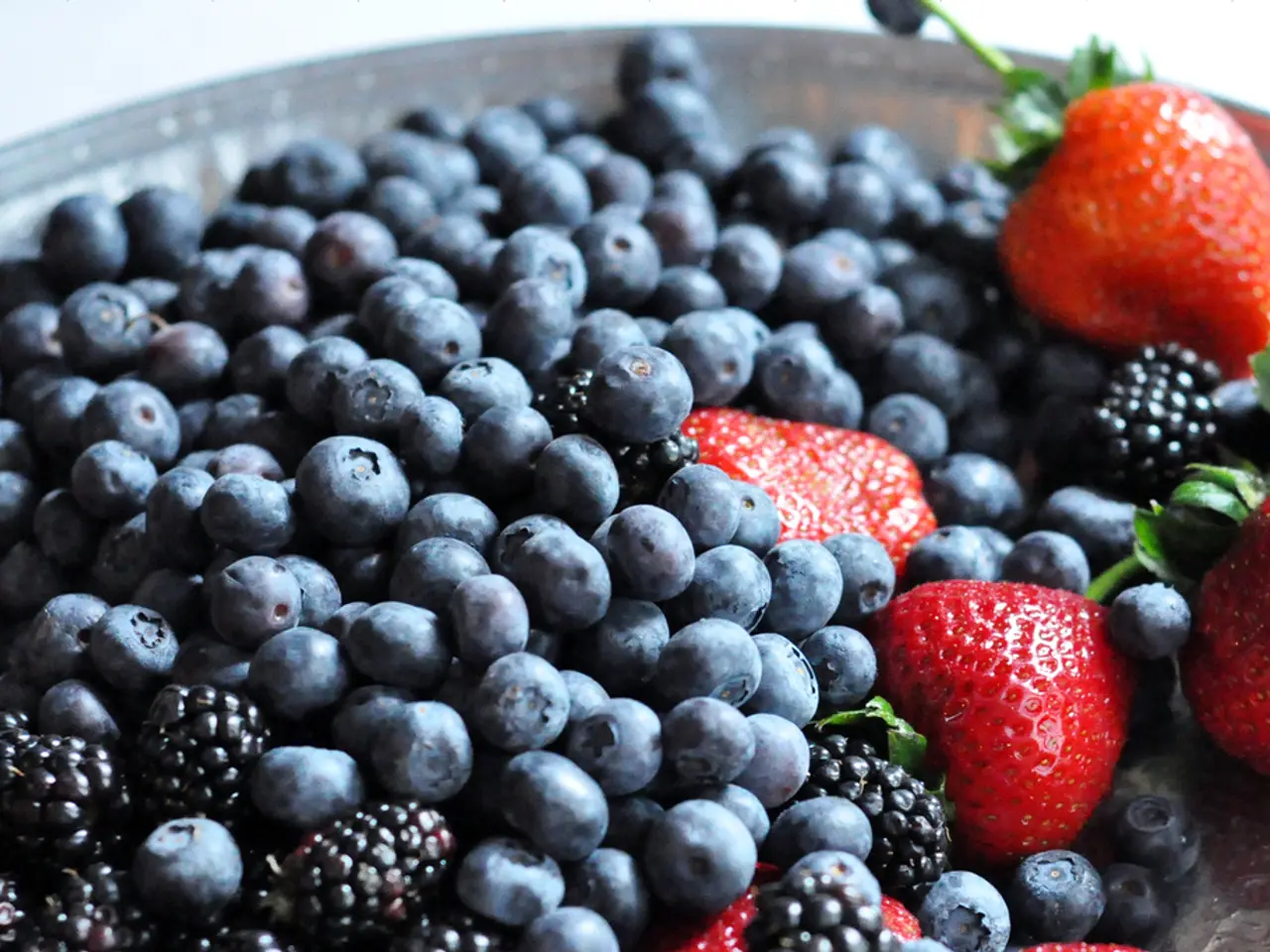Creating a pH Sensor Using Blackberries: A Step-by-Step Guide
In a fascinating DIY science project, you can create a pH indicator using blackberries, a common and anthocyanin-rich fruit. This natural pH indicator changes colour depending on the acidity or alkalinity of a solution.
To get started, collect a handful of blackberries and add them to about 200ml of water. Mash or crush the blackberries to release the juice, then gently sieve the mixture to remove the crushed berries, and save the liquid. This is your blackberry indicator.
The resulting juice will exhibit colour changes depending on pH: - In acidic solutions, it tends to turn reddish or pink. - In neutral solutions, it stays purplish. - In basic (alkaline) solutions, it may shift to greenish or yellowish hues.
For best results, use fresh or properly stored fruit extract, handle gently to preserve anthocyanin content, and store in the refrigerator away from light to maintain indicator potency longer.
Once you've made your blackberry indicator, you can test its effectiveness by adding drops of acidic (vinegar or lemon juice) and basic (baking soda dissolved in water) solutions to see the colour change.
This method for creating a pH indicator does not require any specialized equipment. You can also try using just the juice from blackberries without adding boiling water.
It's worth noting that anthocyanins, the pigments responsible for this colour change, are a natural pH indicator. This means that other anthocyanin-rich fruits like blueberries and blackcurrants can also be used to create similar indicators.
For those interested in exploring further, you can make an indicator from red cabbage and test the same substances. The specific colours produced by the blackberry indicator may vary depending on the exact pH of the solution.
This simple and fun project not only demonstrates the power of science but also encourages the use of natural resources in everyday life. So, why not give it a try and discover the world of pH indicators in your own kitchen?
Last Updated on August 6, 2025 by Emma Vanstone.
- Science projects can be engaging and practical, as demonstrated by creating a pH indicator using blackberries, a common and anthocyanin-rich fruit.
- This blackberry indicator can be used for health-and-wellness purposes, allowing you to test the acidity or alkalinity of various solutions like vinegar or baking soda.
- Personal growth and learning can be fostered through DIY science projects like this one, as it encourages understanding of fitness-and-exercise routines, nutrition, and education-and-self-development principles.
- Additionally, the pigments responsible for the color changes in the blackberry indicator, anthocyanins, are found in other anthocyanin-rich fruits such as blueberries and blackcurrants, which can also be used to create similar pH indicators.




